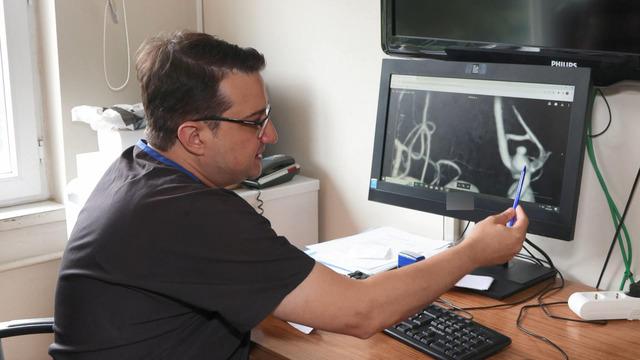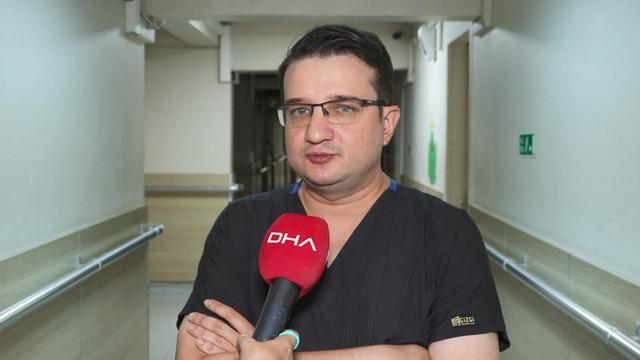The bubbles formed at the intersection of the brain vessels as a result of weakening and thinning of the vessel wall due to reasons such as blood pressure and cholesterol are called aneurysms. If it can be diagnosed before it ruptures and bleeds, it is treated surgically or more often with interventional methods. Aneurysm patients treated without bleeding have a much higher chance of survival. However, cerebral hemorrhages caused by the rupture of the bubble are one of the most feared tables in the field of neurosurgery. Sometimes, the treatment of patients whose aneurysm has been detected without bleeding may be delayed due to the request to get opinions from different doctors or for various reasons.
NEW DISCOVERY ON FATAL BRAIN ANEURYSM
A study by the doctors of the University of Health Sciences Fatih Sultan Mehmet Training and Research Hospital determined which of these aneurysms had a higher risk of rupture. Accordingly, if other ‘puppy’ balloons have formed on the existing bubble, the risk of bleeding increases 3 times. One-fifth of newly detected aneurysms are ‘puppy’ aneurysms. Assoc. Dr. Murat Şakir Ekşi explained the details of the study that included 107 patients.
“ONLY ONE PATIENT SURVIVES STATISTICALLY”
Pointing out that the countdown has begun for the patient with the ‘subarachnoid hemorrhage’ caused by the rupture of the aneurysm, Assoc. Dr. Ekşi, ” Aneurysms are the formation of bubbles at the intersection of the brain vessels. These bubbles are the weakening of the vessel wall with cholesterol, arteriosclerosis and high blood pressure over time, and the formation of bubbles in this weakened section with the effect of pressure.
Aneurysms can occur in 3-8 out of every 100 people. This can enlarge and eventually explode under the influence of underlying diseases. We describe this as a cerebral hemorrhage. It is a very dangerous process, unfortunately we lose one out of every 4 patients at the time of the event. One of the remaining 3 patients is on the way, and one of the remaining 2 patients is lost in the hospital. Statistically, only one patient survives. It is the biggest, most important and deadly disease of neurosurgery.
Explaining that they follow two approaches in aneurysms that can be diagnosed without bleeding, Assoc. Dr. Ekşi said, “It is intervened with open or closed methods. In closed intervention, angiography is performed as if cardiac angiography is performed by entering the groin or arm. These aneurysms are closed by interventional neuroradiology right after,” he said.

THEY HAVE DETERMINED THE RISK OF BLEEDING WITH THEIR STUDY
Assoc. Dr. Emphasizing that their study was aimed at this “grey area”, Ekşi gave the following information: “When should we do the intervention before there is bleeding, before the life-threatening risk occurs? This is not clear in the literature, there is no definitive information. We also did the intervention in the neurosurgery clinic of our own hospital. We conducted a study to distinguish which bleeding and non-bleeding aneurysms in the forebrain region are more prone to bleeding and which bleeding occurs later. For this purpose, we scanned and analyzed similar studies in the literature one by one. We have put forward an important argument in terms of providing clear information.”
FACTORS INCREASING THE RISK OF ANEURYSM
Emphasizing that they evaluated the data of 107 patients for the study, Assoc. Dr. Ekşi said: “The aneurysms (Acom) in the forebrain region of the patients bled in some and did not bleed in some of them. Our analyzes revealed that a new bubble could form on these bubbles, and that those with ‘pup’ aneurysms were 3 times more likely to bleed. A fifth of every new aneurysm detected has this juvenile aneurysm, which is a factor that increases the rate of bleeding. In addition, if the patient has a regular smoking history (even if in the past), the probability of bleeding increases by 70 percent. Young age also increases the risk by 5 percent. So the younger the patient, especially if he’s under 50, the more likely his aneurysm will bleed.”
“DOCTOR CAN BLEED WHILE THE DOCTOR WATCHES”
Noting that their main goal is to intervene in aneurysms under the age of 50 without bleeding, Assoc. Dr. Ekşi explained the reason for this with the following warnings: “Our main goal is the aneurysms detected in this young population. Because our study also showed that they are at higher risk. Therefore, an aneurysm that meets these criteria has been diagnosed in some way (and there is another above the existing bubble). Patients with a juvenile aneurysm should be warned that the risk of bleeding is high and the risk should be underlined. In this way, it is important to plan the treatment process of an existing aneurysm with open or closed methods as soon as possible. Sometimes patients may want to go to several different physicians to be sure. “We have faced such a situation before. Our patient wanted to get opinions from other doctors with his films. While the doctor was visiting the doctor, a brain hemorrhage occurred. We made an intervention and the patient survived after bleeding. But not everyone may be so lucky.”

“SEVERE PAIN STARTING FROM THE NECK AND SPREADING TO THE HEAD IS A CONDITION SPECIFIC TO ANEURYSM”
Stating that there may not always be a clear and differential diagnosis in brain aneurysms, the main symptom of which is severe headache, Assoc. Dr. Ekşi concluded his words as follows: “Unfortunately, aneurysm does not have a unique and direct finding. Very rarely, leakage-like, non-sudden bleeding can occur. In this case, severe pain begins in the neck and radiates all over the head. This symptom is specific to aneurysm. This is the case. In a complaint, the patient may think that the headache may be related to other diseases. But this is not like a normal headache. It is beneficial to be evaluated by a neurologist or neurosurgeon in the nearest health institution immediately. What is more important is, for example, a migraine patient with long-term follow-up “A person may think that this pain is caused by migraine. Migraine patients also need to consult their doctor whenever the character of their pain changes.” (DHA)
